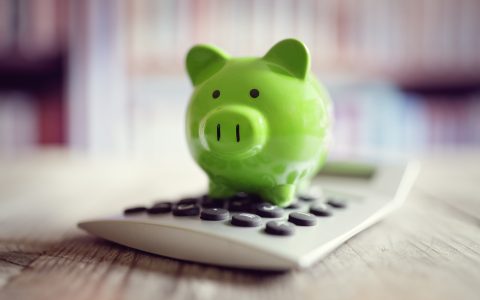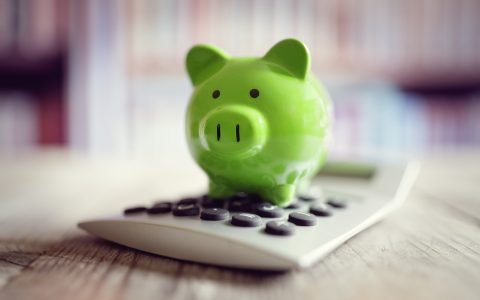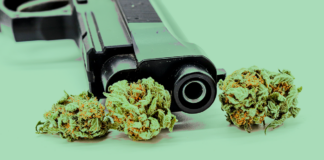As legalization gains momentum across North America, many officials in non-legal states are looking wistfully at their 420-friendly neighbors and wondering if they’re missing out on an opportunity to bring in millions of dollars in cannabis tax revenue.
A new report by New York University, for example, suggests that legalization in New York State could “generate a new revenue stream dedicated to mass transit”—and help revive New York’s City’s crumbling subway system.
The Goldilocks Model
At the same time there’s a lot of discussion among economists searching for the “Goldilocks” model when it comes to taxing cannabis.
In other words, if a tax rate is set too low it won’t help the state coffers—and leaves money on the table. If it’s too high, it might drive consumers back to the untaxed illicit market.
One recent study estimated that states could raise cannabis taxes to 50% and not see a dip in revenue.
So what’s the “just right” tax rate that consumers will tolerate at state-licensed cannabis stores?
In a recent research paper, two economics professors, Brett Hollenbeck of UCLA and Kosuke Uetake of Yale University, examined three years of cannabis sales in Washington State to try to answer that question.
Washington State has some of the highest cannabis excise taxes in the nation, at 37%.
For your average adult-use gram sold at a Washington retail store, “the consumer is paying about $18 for that gram and the retailer is receiving about $13 for it,” Hollenbeck told Leafly, “and the state is getting the [$5] difference.”
By comparison, the tax rate on recreational cannabis products in Massachusetts comes to about 17%. And yet, according to Professor Hollenbeck, retailers in Washington are doing quite well.
“They’re earning very high margins and charging very high prices,” he said. “And they seem to be able to get away with this because there’s not a lot of competition,” due to the state’s tight restrictions on the number of retail licenses available in the cannabis sector.
Higher Taxes Don’t Repel Consumers
Their conclusion: States could significantly raise taxes on cannabis and not see a dip in overall revenue. In fact, Hollenbeck and Uetake calculate that raising Washington state’s tax rate to 50% (from its current 37%) would cause retailers to lower their margins, softening to blow to the consumer, and increase tax revenue by nearly 22%.
Hollenbeck and Uetake also determined that, even with a comparatively high tax rate, Washington’s cannabis consumers weren’t going back to the illicit market.
“The main thing that we see is that when prices go up people substitute within the retailer, from more expensive products to less expensive products,” Hollenbeck said, “But we don’t see them going to the other (legal) retailer across town. It just doesn’t look like they’re willing to do that.”
He speculated there might be a variety of reasons driving Washington State consumers to accept higher cannabis taxes. They might want to support their local legal stores and licensed farmers. Washington also doesn’t allow consumers to grow cannabis at home, he added, which might make it more difficult to locate illicit-market growers.
And then there’s the growing popularity of non-flower, processed cannabis products like vape cartridges, which are hard to find on the illicit market.
Looking to Mature Cannabis Markets
As states like Michigan ready their adult-use market, and others like New Jersey consider legislative legalization measures, officials are asking: Will the Washington State tax model work in other states?
Patrick Oglesby, attorney and founder of the Center for New Revenue in Chapel Hill, North Carolina, believes that higher taxes on cannabis will be a growing trend.
“It’s hard to do that, because tax increases aren’t popular,” Oglesby told Leafly, “but marijuana is a little different.”
Once you have a mature and fully-functioning legal cannabis market, like in Washington State and Colorado, “the after-tax price…will (still) be much, much lower than the best price you can get in Prohibition,” he said.
Oglesby also believes that, as cannabis prices continue their fall, most illicit market growers and sellers won’t be able to compete economically with their legal counterparts.
“When you’re not able to operate in the open, when people have to find you in the dead of night, man, that’s hard to do,” he said. “There’s a lot of cost with operating illegally. Part of it is what they call the ‘prohibition premium,’ and that’s why the price used to be so high in the past.” “People had to be compensated for the risk of operating illegally. So almost all of these guys are going to get squeezed out.”
Hidden Taxes on Legal Cannabis
Despite all the talk about a “Green Rush,” most legal cannabis industries are not yet cash cows. And unlike the alcohol and tobacco sectors, which have thrived for decades in spite of so-called “sin taxes,” the federal illegality of cannabis has created an uneven playing field for pot producers, manufacturers and distributors.
Dana Borys, a tax partner at the MGO-ELLO Alliance, a Los Angeles-based cannabis financial, tax and advisory services firm, points to the ongoing controversy over Section 280E of the federal tax code, which bars businesses involved with cannabis or other Schedule One controlled substances from taking tax deductions or credits on their everyday business expenses.
“You have a huge (financial) haircut on the costs that you can’t deduct,” she told Leafly. “It’s sort of a hidden tax, whereas the alcohol industry isn’t subjected to that.”
Charles Le, a senior tax manager at MGO-ELLO, noted that stricter regulation also means cannabis businesses have to spend more on attorneys and advisors if they want to avoid government penalties and massive tax hits.
And because of that, “from a tax landscape…we’re starting to see a lot of consolidation,” he told Leafly. “A lot of the small mom-and-pop farmers are unable to compete in the new regulated market. The costs are simply too high from a tax standpoint and compliance standpoint.”
Watching Your Neighbors Make Money
Le also believes that, as cannabis loses its cultural stigma and becomes more accepted, most pot consumers will opt for government-regulated weed.
“The changes that are occurring are happening behind the scenes,” he said. “From the consumer perspective…you’re probably not going to notice an additional 5% tax at the local level, especially if the business in question absorbs some of that against their margin and doesn’t pass that fully on to the consumer.”
For his part, Patrick Oglesby thinks there’s a parallel to be drawn between government taxation of legal cannabis and the state lottery programs.
“It used to be there weren’t any lotteries, anywhere,” he said. “But people would drive to (other states) to play the lotteries. The argument for revenue becomes stronger when it’s clear that your neighbors are making money off of it.”













